Vegan Globetrotter is supported by our audience. When you purchase through one of our links, we may earn a small affiliate commission. As an Amazon Associate I earn from qualifying purchases. Your cost is not affected.
==================
In the dynamic world of kitchen appliances, portable induction cooktops have emerged as a promising innovation, promising both convenience and energy efficiency. As we navigate the landscape of sustainable living, understanding the energy efficiency of these cooktops becomes crucial. In this article, we delve into the workings of portable induction cooktops, exploring how they harness energy to cook food swiftly and effectively while minimizing their environmental footprint. Join us as we uncover the science behind this revolutionary kitchen technology and how it can transform how we cook at home.
Assessing the Energy Efficiency of Portable Induction Cooktops: A Comprehensive Evaluation
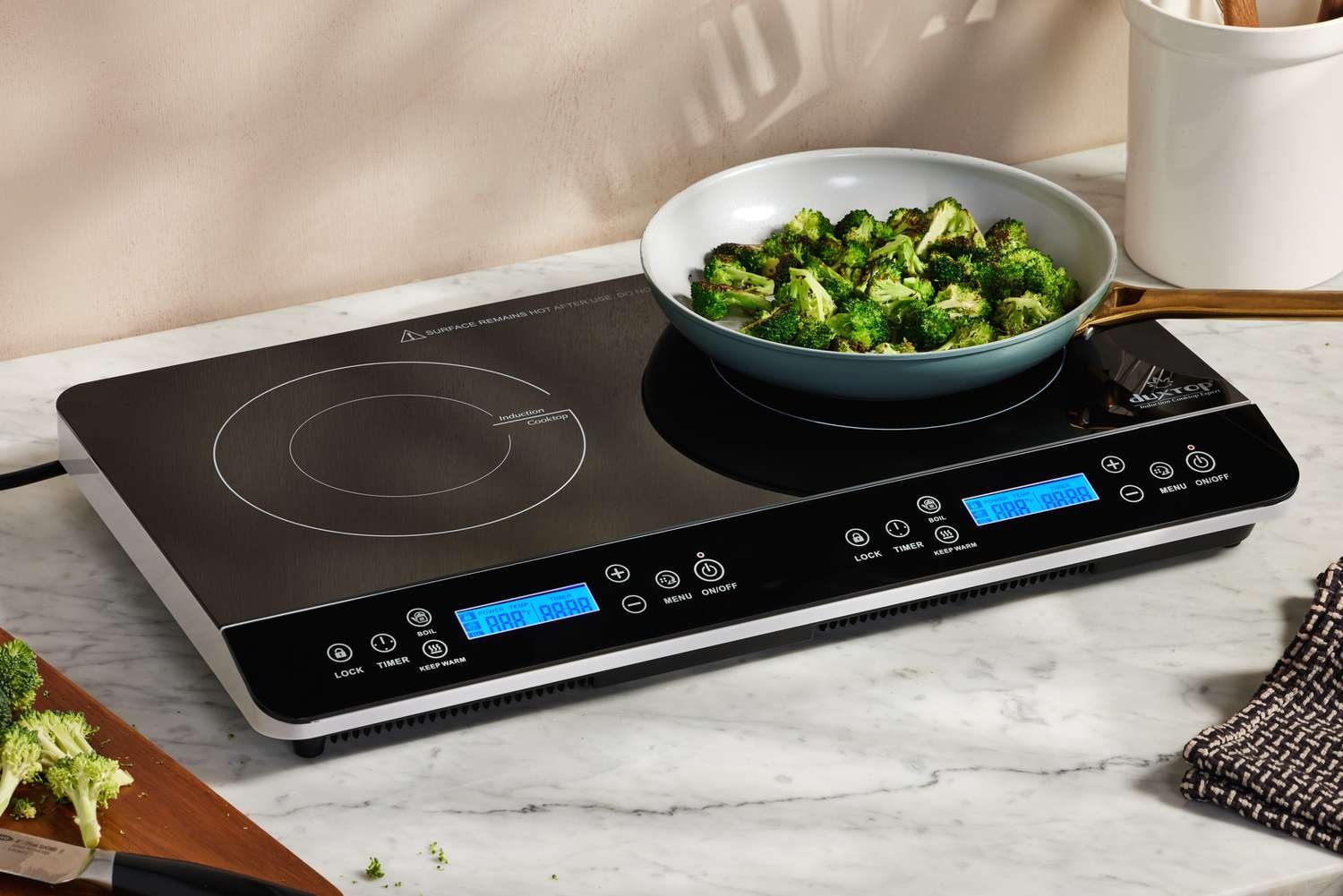
Portable induction cooktops have become increasingly popular as a flexible and energy-efficient cooking solution. Unlike traditional electric or gas cooktops, induction cooktops work by using electromagnetic fields to heat your pots and pans directly. This innovative approach offers a more efficient heat transfer, reducing cooking times and lowering utility bills.
Furthermore, the portable nature of these cooktops allows you to cook with induction technology anywhere you have access to electricity, making them a versatile addition to any kitchen or outdoor cooking setting. Let’s dig deeper into how these cooktops work and explore their impact on energy consumption and cooking efficiency.
Key Takeaways
- Portable Induction Cooktops utilize electromagnetic fields to heat pots and pans directly. This technology has been recognized for its energy efficiency and potential to achieve significant energy savings, particularly when compared to conventional electric and gas cooktops.
- There are differences between built-in induction and portable induction cooktops, ranging from size and portability to cost.
- When assessing the energy efficiency of portable induction cooktops, it’s important to consider specific metrics that define consumption and performance, from energy consumption metrics to temperature control and heat distribution.
- When evaluating the energy efficiency of portable induction cooktops, it’s essential to consider their design elements, as these greatly influence performance, from reduced greenhouse gas emissions to energy efficiency.
- The evolution of portable induction cooktops has been characterized by significant breakthroughs in energy efficiency and responsiveness to consumer needs.
Exploring the Fundamentals of Portable Induction Cooktops
Portable Induction Cooktops stand out due to their energy efficiency and precise temperature control. Understanding its basics can help you decide about your cooking technology.
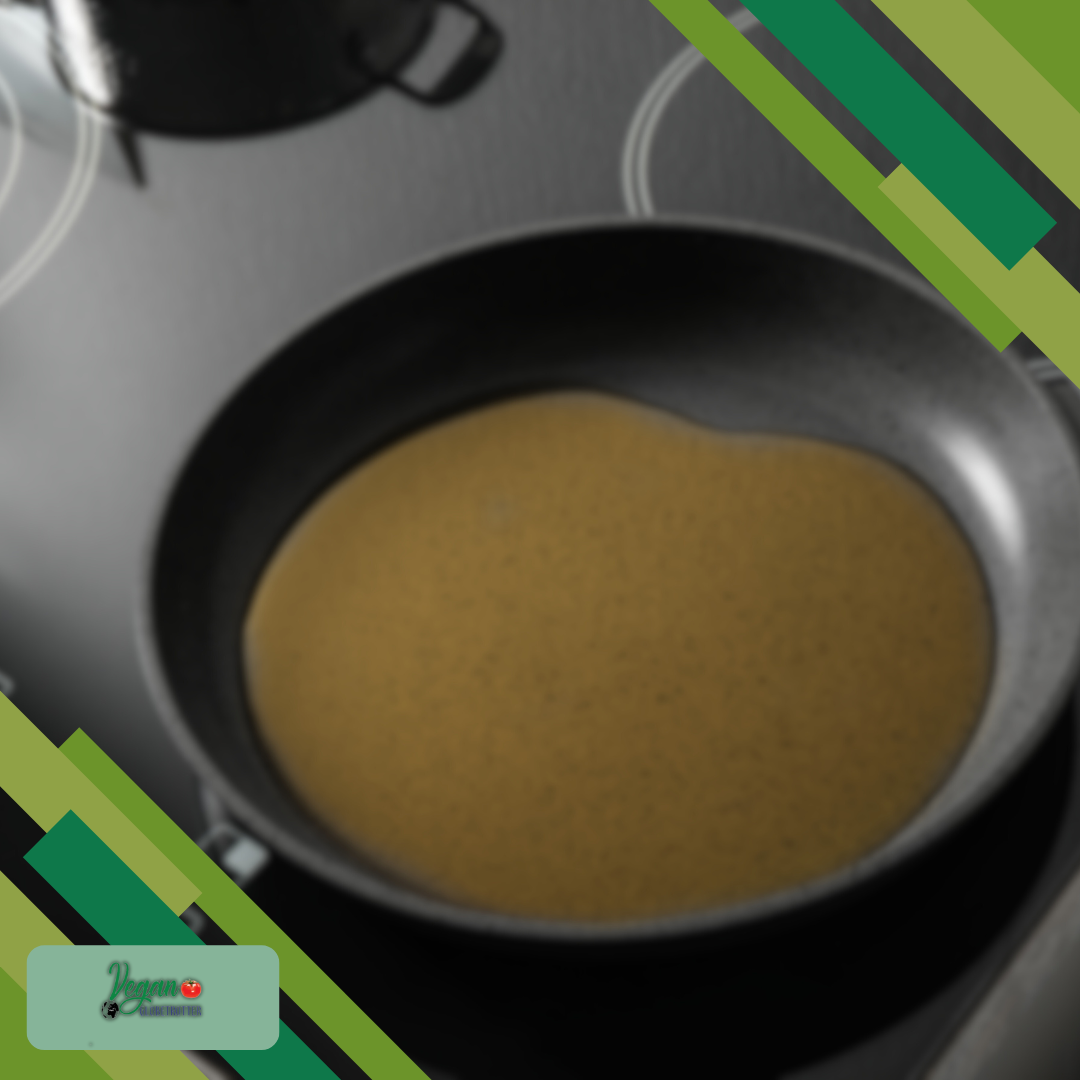
Principles of Induction Heating
Portable induction cooktops use electromagnetic fields to heat pots and pans directly. Here’s how it works: when you turn on an induction cooktop, electricity passes through a coil of copper wire beneath the cooking surface, which generates a magnetic field.
When you place a pan compatible with Induction cooking on top, the magnetic field induces an electric current in the pan, which heats it and cooks the food. The cookware becomes the heating element, making energy transfer more efficient and minimizing waste.
Portable Induction vs. Traditional Cooking Methods
Comparing Induction to traditional cooking methods:
- Efficiency: Induction cooking harnesses up to 90% of the energy consumed to heat food, significantly higher than traditional electric systems at about 74% or gas at around 40%.
- Heat Distribution: Induction delivers even heat distribution across the pan, which can help prevent hot spots and undercooking.
- Control: Induction cooktops offer rapid increases and decrease in heat, allowing for precise cooking and less energy waste.
- Safety: The cooking surface stays relatively cool since heat is generated in the cookware, reducing the risk of burns.
This technology has been assessed as energy efficient and offers significant savings, especially compared to conventional electric and gas cooktops.
Here’s a video discussing the differences between induction and gas cooktops.
By: Los Angeles Times Food
Did You Know?
Did you know you can use these portable induction cooktops indoors? They’re designed to be portable and compact, making them perfect for small kitchens, dorm rooms, camping trips, or RVs.
Key Differences: Portable vs. Built-in Induction Cooktops

Here’s the breakdown of the key differences between portable induction cooktops and built-in induction cooktops:
Size and Portability
- Portable: Small and lightweight, designed to be easily moved around. Perfect for small kitchens, dorms, or occasional outdoor use. They typically accommodate pots up to 12-20cm in diameter.
- Built-in: Fixed installation taking up counter space. Offers a larger cooking surface with multiple burners for handling bigger pots and pans simultaneously.
Power and Performance
- Portable: Lower wattage due to size and portability limitations. May take longer to heat up and have less precise temperature control compared to built-in models.
- Built-in: Higher wattage provides faster heating and more precise temperature control for better cooking results. Can be wired to a dedicated circuit for even more power.
Features
- Portable: Basic features like temperature settings and timers.
- Built-in: A wider range of features including multiple heating zones, touch controls, booster settings for rapid boiling, and safety features like automatic shut-off.
Cost
- Portable: Generally more affordable than built-in models.
- Built-in: A significant investment due to their larger size, higher power, and advanced features.
In Summary
- Portable: Ideal for small spaces, occasional use, or trying out induction cooking before committing to a full-size cooktop.
- Built-in: A permanent kitchen fixture offering more power, features, and cooking surface for serious cooks or those who entertain frequently.
Assessing The Energy Efficiency of Portable Induction Cooktops
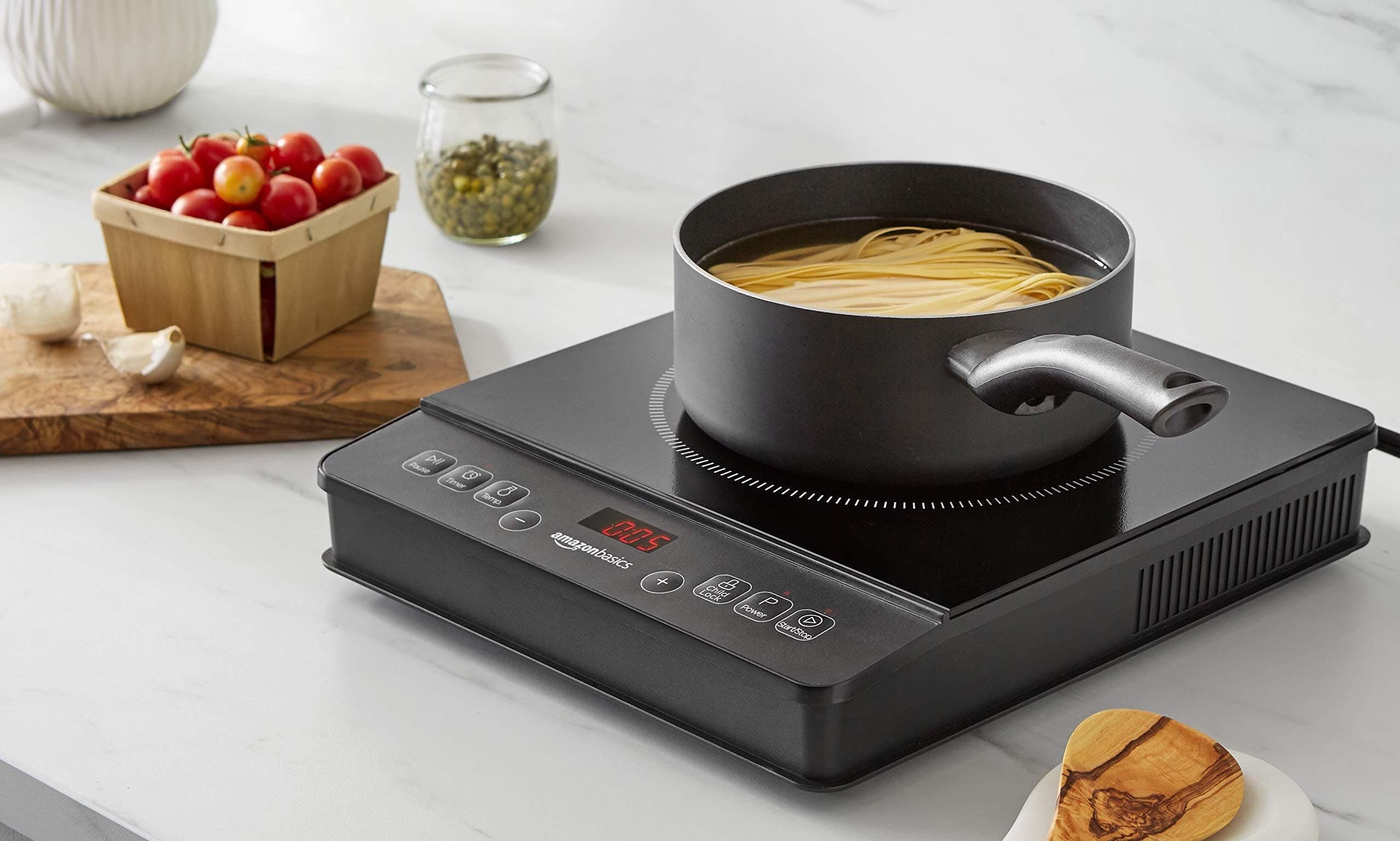
When evaluating the energy efficiency of portable induction cooktops, you’ll want to consider specific metrics that define consumption and performance. Understanding these metrics allows for an accurate assessment of how well a cooktop utilizes electrical power to produce heat.
Energy Consumption Metrics
- Wattage: Portable induction cooktops typically range from 1,000 to 1,800 watts. Compare wattage to heat output to gauge efficiency.
- Energy Efficiency Rating: Some cooktops have an energy rating that quantifies their efficiency in converting electricity into heat.
Temperature Control and Heat Distribution
- Temperature Settings: The more precise the temperature control, the more efficient the cooking process can be. Look for cooktops with a wide range of temperature settings.
- Heat Distribution: Assess the uniformity of heat across the cooking surface. Even heat distribution means your food cooks more efficiently.
Portable Induction Cooktop Design
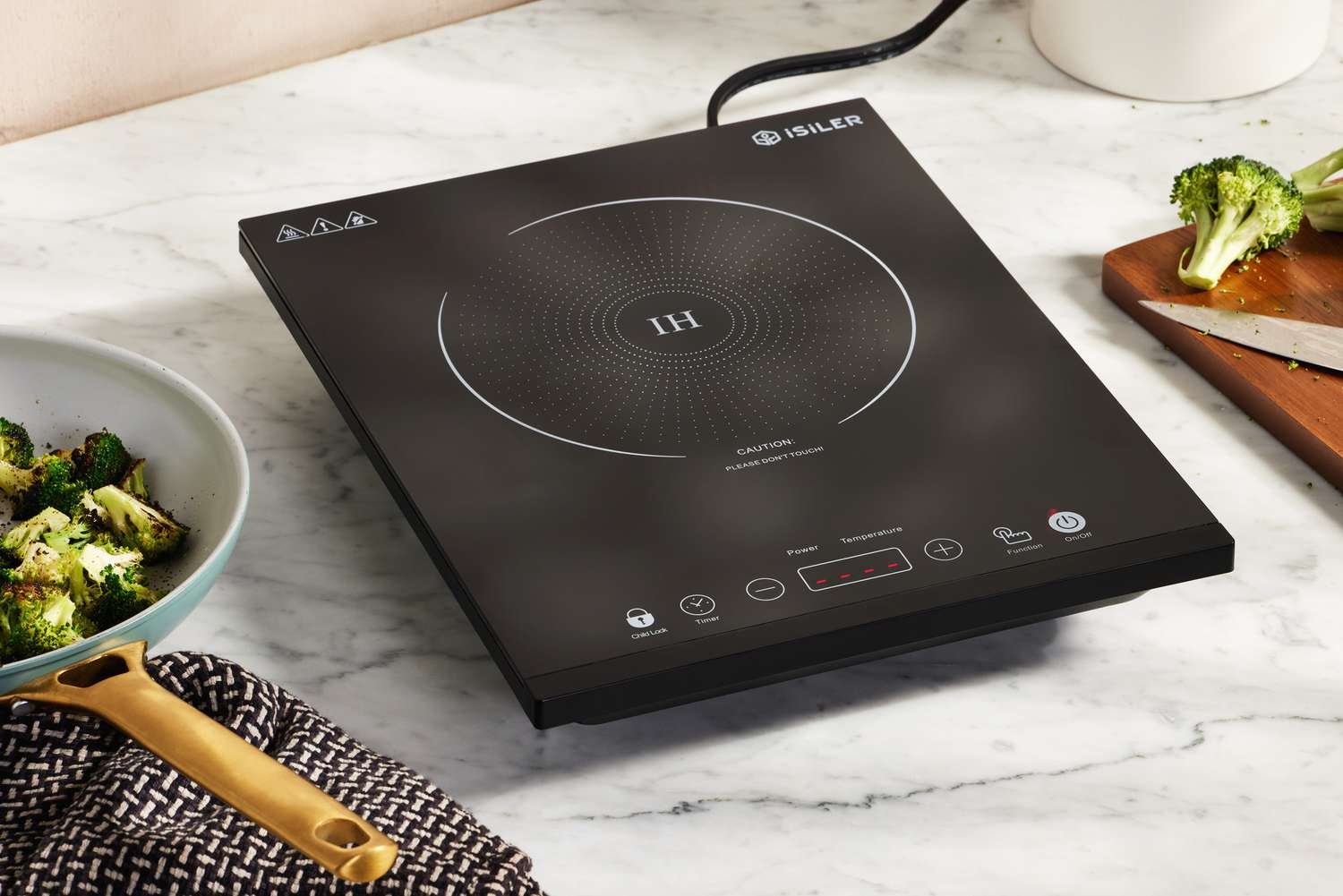
In assessing the energy efficiency of portable induction cooktops, you must consider their design elements, as these greatly influence performance. The materials and the cooktop’s user interface are pivotal in energy consumption and efficiency.
Materials and Construction
Your portable induction cooktops are typically constructed using a combination of durable, heat-resistant materials. The cooking surface is often made of a glass-ceramic blend, chosen for its ability to withstand high temperatures and conduct electromagnetic waves without heat.
Beneath that, you’ll find copper coils – these are crucial as they generate the magnetic field needed to heat your cookware directly. Look for a model with well-insulated housing to minimize energy loss.
Cooktop Features and User Interface
When you examine the features and user interface of portable induction cooktops, take note of programmable temperature settings that allow for precise cooking and can help save energy by preventing overcooking or overheating.
Also, touch controls are not only about modern aesthetics; they help maintain a flat surface, which makes the cooktop easier to clean and maintain. Additionally, indicators for pan detection and automatic shutoff contribute to energy savings by ensuring the cooktop is active only when necessary.
Environmental Impact of Portable Induction Cooktops
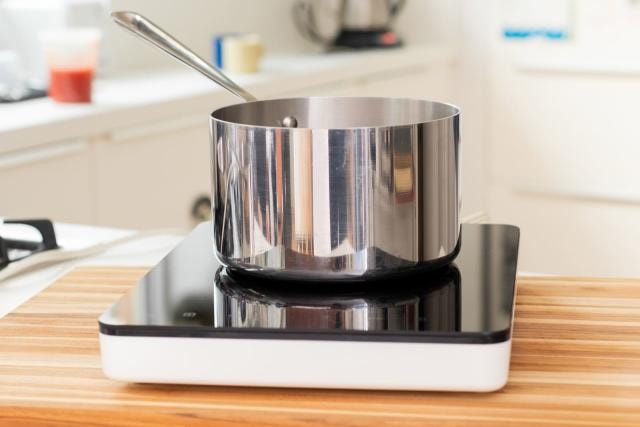
When assessing the energy efficiency of portable induction cooktops, it’s crucial to consider their environmental footprint. Portable induction cooktops have a positive environmental impact in a couple of ways:
- Reduced Greenhouse Gas Emissions: Unlike gas stoves that burn fossil fuels and release greenhouse gases, induction cooktops use electricity. Induction cooking contributes less to climate change in areas with a clean electricity grid (like one that uses solar or wind power).
- Energy Efficiency: Induction cooktops are efficient. They use magnetic fields, which cut down on wasted energy. This means they use less energy than traditional electric or gas cooktops.
Consumer Considerations for Portable Induction Cooktops
When assessing the energy efficiency of portable induction cooktops, you’ll want to look closely at the cost of the unit, how user-friendly it is, and the integrated safety features.

Cost Analysis
Portable induction cooktops range from around $60 to over $200. The initial cost is only one part of the overall expense. When evaluating the cost, it’s important to consider the long-term energy savings associated with the efficiency of Induction cooking.
- Initial purchase price: Varies by brand and model features.
- Long-term savings: Reduced energy consumption can lower utility bills over time.
Ease of Use
Ease of use encompasses the design and functionality of the cooktop. The Duxtop 9600LS and other models have been recognized for their intuitive controls and ease of adjustment during cooking.
Considerations Include:
- Control Panel: Look for a clear and responsive touch panel.
- Temperature Settings: Variable and precise settings allow for better cooking control and efficiency.
Safety Features
A major advantage of portable induction is their enhanced safety features. Unlike traditional cooktops, induction units only heat the cooking vessel, not the surface. Some models, like the Nuwave Gold Precision Induction Cooktop, include additional safety features such as:
- Auto-off: This function turns off the cooktop when no pan is detected or after a period of inactivity.
- Child safety lock: Prevents accidental changes to the settings by children.
Technological Advancements in Portable Induction Cooktops
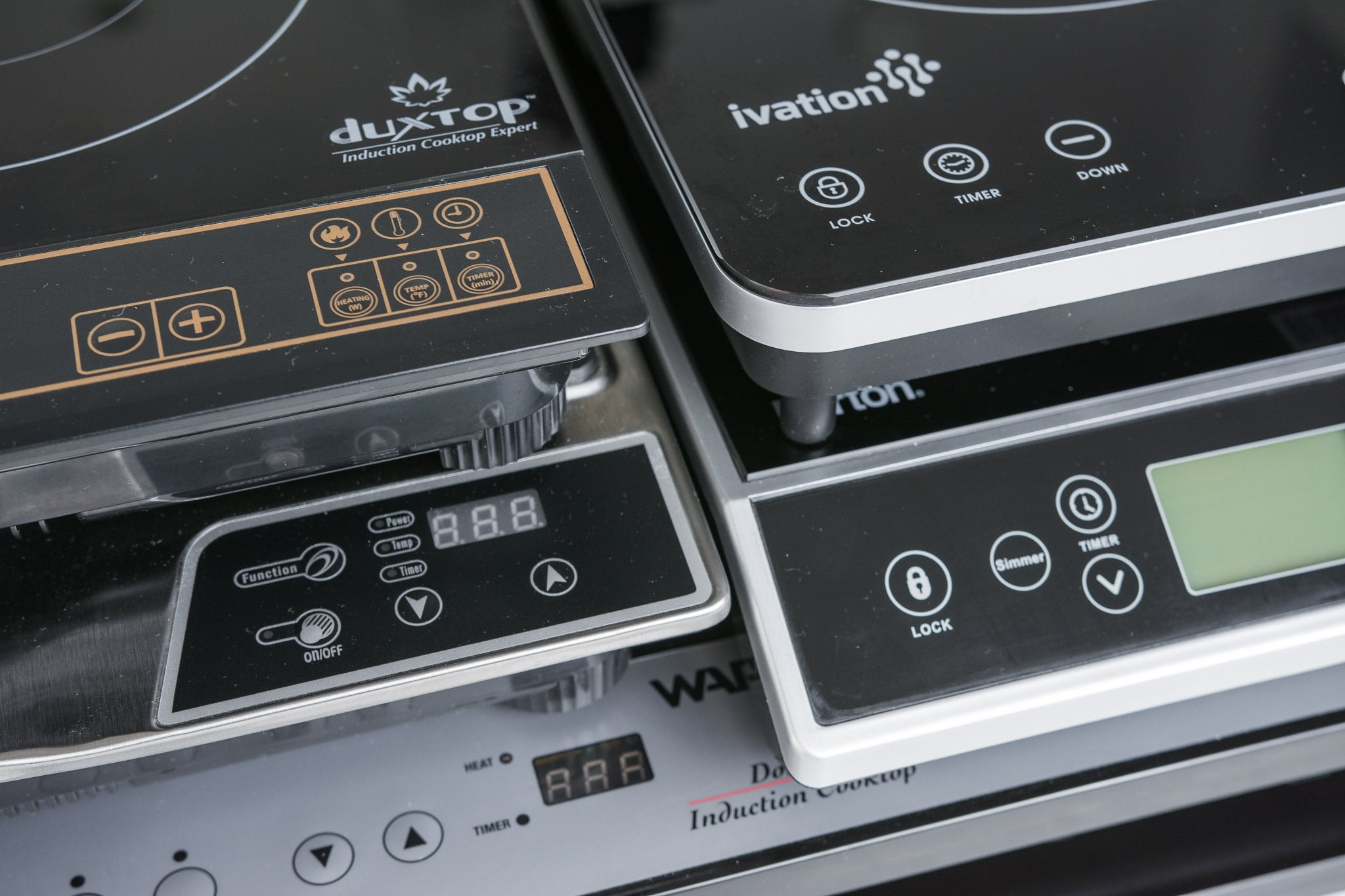
Significant breakthroughs in energy efficiency and market responsiveness to consumer needs mark the evolution of portable induction cooktops.
Innovations in Induction Technology
Your portable induction cooktop will now likely include features like enhanced temperature control and efficiency due to advancements in power electronics.
Some models employ sensitive temperature sensors to ensure precise cooking temperatures. This greatly improves energy usage compared to older models.
Incorporating smart technology also means cooktops can now interact with mobile devices for enhanced functionality. They can adjust temperatures to your preferences and even suggest energy-saving cooking tips.
Emerging Market Trends
Portable induction cooktop manufacturers are quickly adopting eco-friendly materials and sustainable practices, reflecting your increasing concern for the environment.
Products like the Breville Polyscience boast improved energy efficiency and emphasize using recyclable components.
The market also shows a trend towards dual-cooktop models that provide versatility while managing energy consumption efficiently.
Case Studies and Comparative Analyses
When you evaluate the energy efficiency of portable induction cooktops, it is insightful to consider case studies that highlight real-world usage and comparative analyses that benchmark different models.
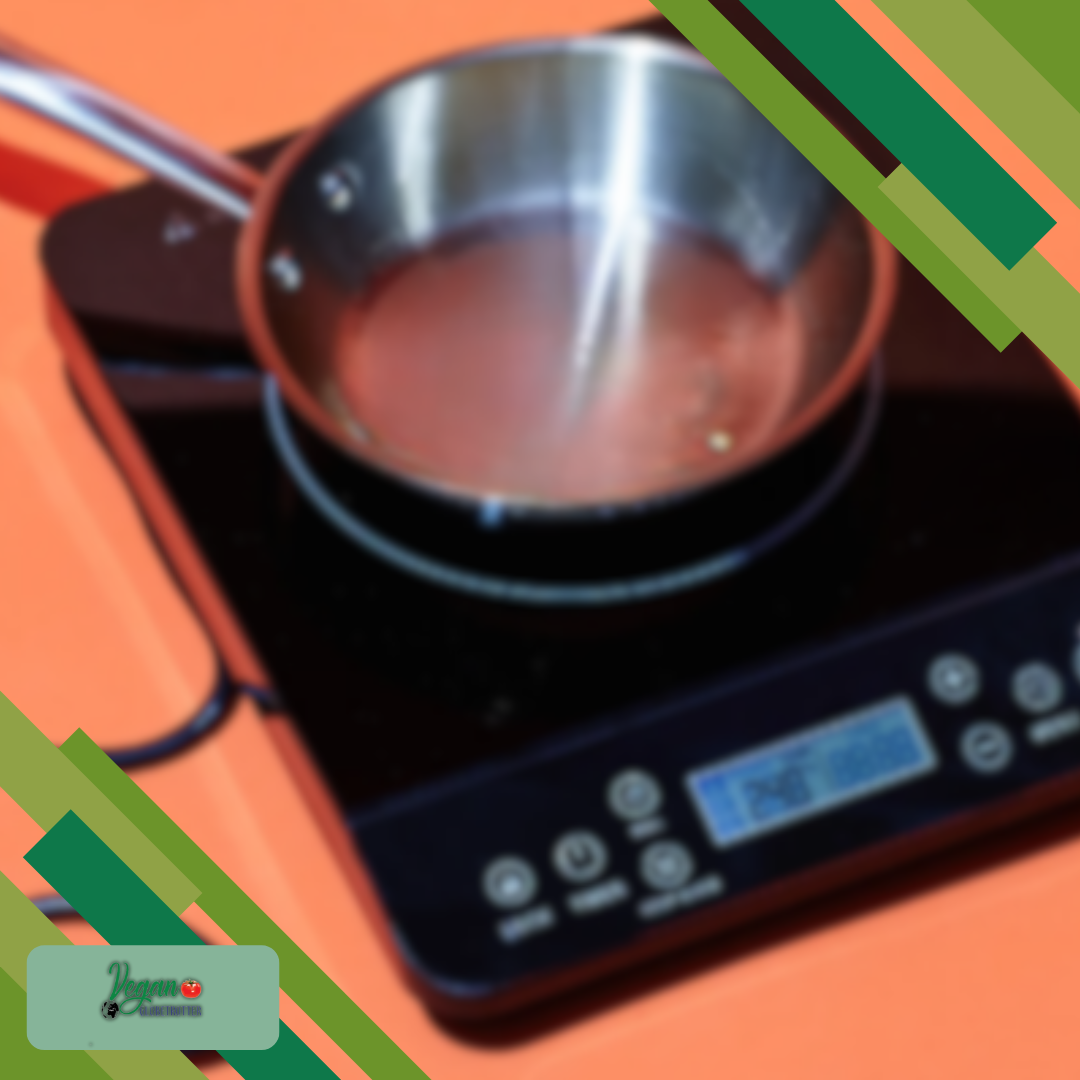
Case Study 1: Duxtop 9600LS
The Duxtop Portable Induction Cooktop Model 9600LS is a common unit in many assessments and is recognized for its balance between performance and energy consumption.
It boasts 20 power levels and a range of temperature settings, providing precision cooking while using energy efficiently.
Case Study 2: Hamilton Beach
The Hamilton Beach Portable Single Induction Cooktop is another model often mentioned in energy efficiency discussions. Known for its affordability, this cooktop is designed for energy-saving with a 150-minute timer and automatic shutoff.
Comparative Analysis
In reviews, the Duxtop 9600LS frequently outperforms competitors like the Hamilton Beach model in boiling water and simmering tests, suggesting a more efficient energy transfer.
Here’s a video about the best portable induction cooktops.
By: Legit Pick
Embracing Innovation: The Energy Efficiency of Portable Induction Cooktops
Portable induction cooktops have several advantages over traditional cooking methods. They utilize electromagnetic fields to directly heat cookware, reducing cooking times and leading to significant energy savings compared to electric and gas cooktops. This efficiency is further enhanced by their precise temperature control and even heat distribution, contributing to a more sustainable kitchen environment.
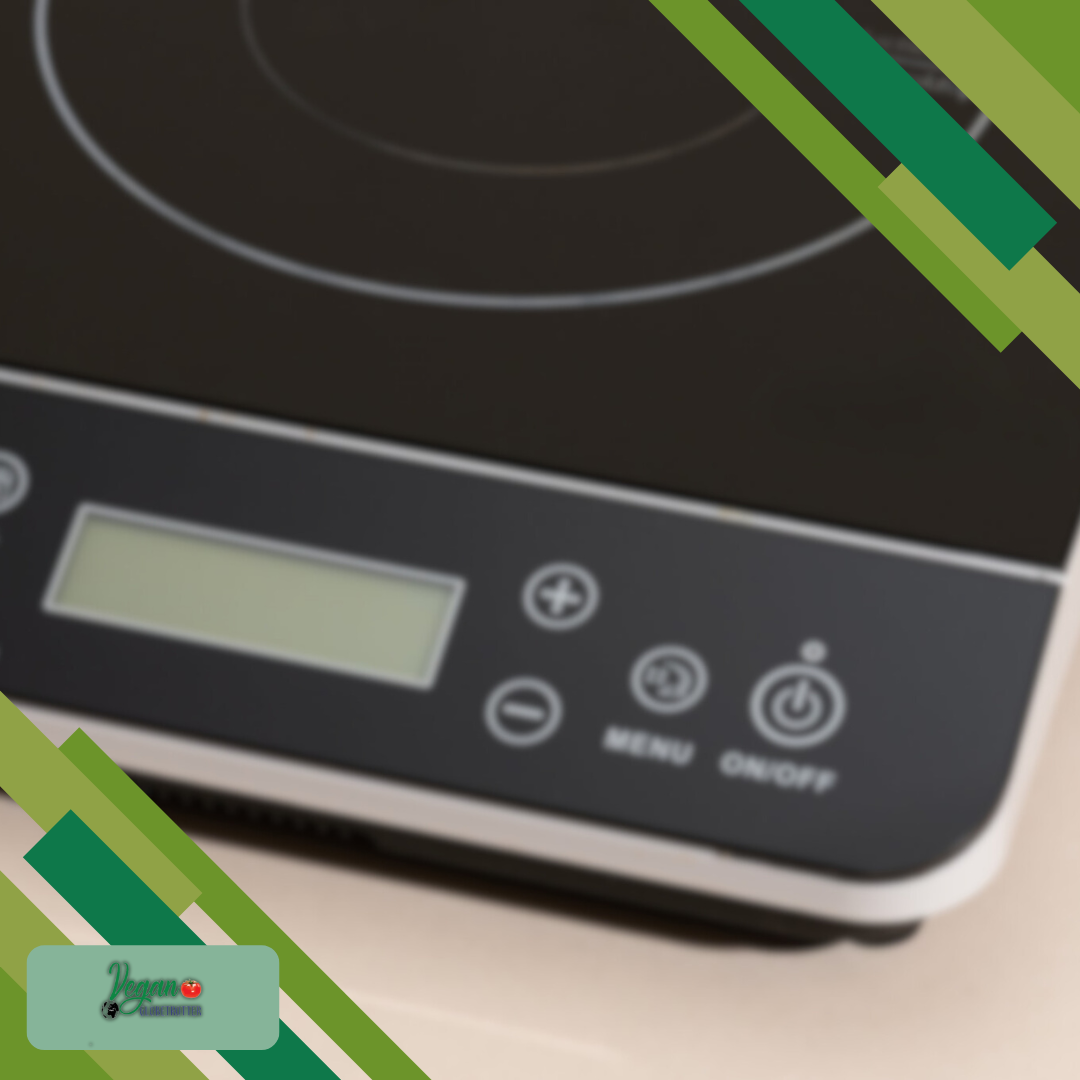
Moreover, their portable nature allows for versatile cooking options, whether indoors or outdoors. As technology continues to advance, so do portable induction cooktops’ capabilities. Innovations in power electronics and smart technology are driving improvements in energy efficiency and user experience. Manufacturers also focus on eco-friendly materials and sustainable practices, aligning with consumer preferences for greener appliances.
In conclusion, portable induction represent a step forward in energy-efficient cooking technology. They reduce greenhouse gas emissions and offer a practical solution for those looking to save on energy costs while enhancing their cooking experience. Whether in a small apartment or outdoor setting, these cooktops are a versatile and environmentally friendly choice for modern kitchens. Join us in embracing this innovative technology and transforming how we cook at home.
Frequently Asked Questions
How Does Wattage Impact the Energy Efficiency of Induction Cooktops?
Wattage impacts the maximum power output of induction cooktops. Higher wattage can mean faster heating but doesn’t necessarily equate to lower energy efficiency. Effective control and usage patterns are key.
Can Energy Efficiency in Portable Induction Cooktops Vary Between Different Models and Brands?
Energy efficiency can vary significantly between models and brands, as different products may have varying levels of power usage and technology designed to minimize energy consumption.
How Much Energy Can You Save by Using a Portable Induction Cooktop Compared to Other Cooktops?
Using a portable induction cooktop can lead to potential energy savings. This is due to its rapid heating capabilities and direct transfer of heat. These result in less wasted energy and shorter cooking times than other cooktop types.
Find Us on Social Media
Facebook: VeganGlobetrotter Join us on our Facebook page, VeganGlobetrotter, where we share mouthwatering plant-based recipes and tips to inspire your vegan lifestyle.
Instagram: _veganglobetrotter Follow us on Instagram at _veganglobetrotter to embark on a visual journey of delectable vegan dishes.
Pinterest: theveganglobetrotter Dive into the world of plant-based goodness and wellness with our Pinterest account, theveganglobetrotter.
Twitter: VeganGlobetrot Stay up-to-date with the latest vegan trends, insightful articles, and exciting updates by following us on Twitter at VeganGlobetrot.

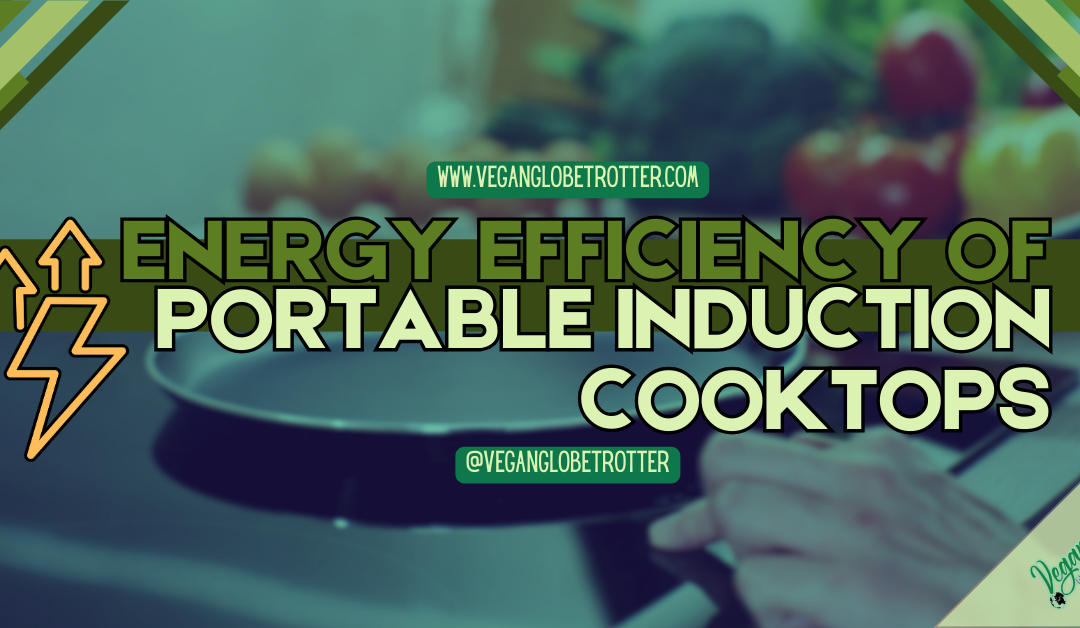

Don't miss out
when new recipes and information are added!
Join our newsletter for free recipes,
healthy living inspiration, and special offers
You have Successfully Subscribed!